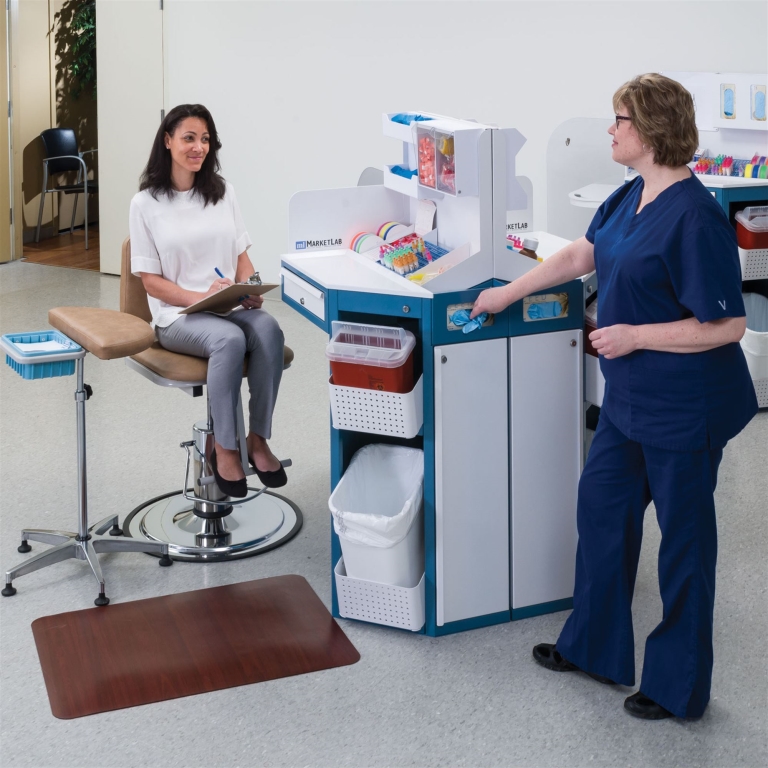How Long Does It Take to Become a Phlebotomist? A Complete Career Timeline adn Certification Guide
If you’re considering a career in healthcare, becoming a phlebotomist can be an excellent choice. Not only is it a vital role in medical diagnostics, but it also offers a relatively quick pathway into the healthcare field with rewarding job opportunities. In this extensive guide, we’ll explore the typical timeline for becoming a certified phlebotomist, the certification process, practical tips for success, and insights into this fulfilling career.
Introduction
Phlebotomy is a specialized healthcare profession focused on drawing blood for testing, transfusions, donations, or research. As a phlebotomist, you’ll work closely with patients and medical professionals, making a meaningful impact on patient care. Many aspiring healthcare workers ask, “How long does it take to become a phlebotomist?” The answer depends on your educational background and certification path, but generally, it’s a faster route compared to other medical careers.
Understanding the Career Timeline of a Phlebotomist
Becoming a licensed or certified phlebotomist involves several steps, from education and training to certification and employment. Let’s take a detailed look at each stage:
step 1: Educational Foundations
- High School Diploma or Equivalent: The minimum education requirement for entering phlebotomy training programs is a high school diploma or GED.
Step 2: Enrolling in a Phlebotomy training Program
The length of this training depends on the program type, but typically, it ranges from a few hours to several weeks:
| Program Type | Duration | Details |
|---|---|---|
| Short-term workshops | Varies (1-3 days) | Introductory or refresher courses, often practical |
| Certificate programs | 1-4 weeks | intensive training covering blood collection techniques, safety protocols, and patient interaction |
| Diploma programs | 4-12 weeks | More comprehensive training, sometimes including anatomy and physiology modules |
Step 3: Gaining Practical Experience
Most training programs include hands-on internships or externships with real patients, which may last from a few days to several weeks depending on the program’s curriculum.
Step 4: Certification and Licensure
While certification requirements vary by state and employer, obtaining certification greatly enhances your job prospects and salary potential. Certification typically requires:
- Passing a recognized exam (such as the Phlebotomy Technician certification from the American Society for Clinical Pathology or the National Healthcareer Association)
- Completing a specified number of blood draws (often between 40-100 triumphant collections)
- Submitting proof of training and clinical experience
Step 5: Job placement and Continuing Education
After certification, you can start applying for phlebotomist positions. Continuing education might potentially be required to maintain certification and stay updated on best practices.
How Long Does It Usually Take to Become a Certified Phlebotomist?
The total duration from starting your education to becoming employment-ready generally ranges from 4 to 12 weeks. here’s a quick overview:
- High school diploma or equivalent: 0 years (if already achieved)
- Phlebotomy training program: 1-4 weeks
- Certification process and clinical practice: 2-4 weeks
- Total average time to become a certified phlebotomist: 4-12 weeks
Benefits of Becoming a Phlebotomist
- Low barrier to entry with short training programs
- High demand in hospitals, clinics, and blood banks
- Opportunity for career advancement into medical assisting or healthcare management
- Competitive salary for entry-level healthcare roles
- Fulfilling work helping patients and supporting medical diagnoses
Practical Tips for Aspiring Phlebotomists
- Choose accredited training programs: Ensure your program is recognized by relevant health authorities.
- Gain hands-on experience: Practice blood draws under supervision to build confidence and skill.
- Prepare for certification exams: Use practice tests and study guides to increase your chances of passing.
- Develop excellent patient communication skills: Empathy and patience are key in building trust.
- stay updated on healthcare regulations: Keep learning about safety protocols and new methods.
Case Study: From Aspiring Student to Certified Phlebotomist
Meet Jane, who decided to pursue a career in healthcare. She completed a 3-week certificate program in phlebotomy, gained hands-on experience during her externship, and passed her certification exam. within just 8 weeks, Jane was working as a certified phlebotomist at a local clinic, earning a competitive entry-level salary. Her proactive approach and dedication to learning helped her quickly transition into her new role.
First-Hand Experience: What You’re Likely to encounter
Starting as a phlebotomist can be both exciting and challenging. Patience and good communication are essential as you interact with patients of all ages and backgrounds. Early days may include mastering blood draw techniques, managing patient anxiety, and adhering to strict safety standards. With practice,your confidence and efficiency will grow,opening pathways to advanced roles or specialized certifications like arterial blood gases or pediatric phlebotomy.
Conclusion
Becoming a phlebotomist is an accessible and rewarding career choice for those interested in healthcare and patient interaction. Thanks to relatively quick training programs, most individuals can become certified within just a few weeks to a couple of months. The demand for skilled phlebotomists continues to rise, offering job stability and opportunities for growth. Weather you’re seeking a fast entry into healthcare or a stepping stone to further medical careers,phlebotomy provides a practical,impactful path forward.
Ready to Start Your Phlebotomy Career?
If you’re eager to embark on this fulfilling journey, research accredited training programs near you, prepare for certification, and begin making a difference today!
